Written by Nicole on November 21, 2017 |
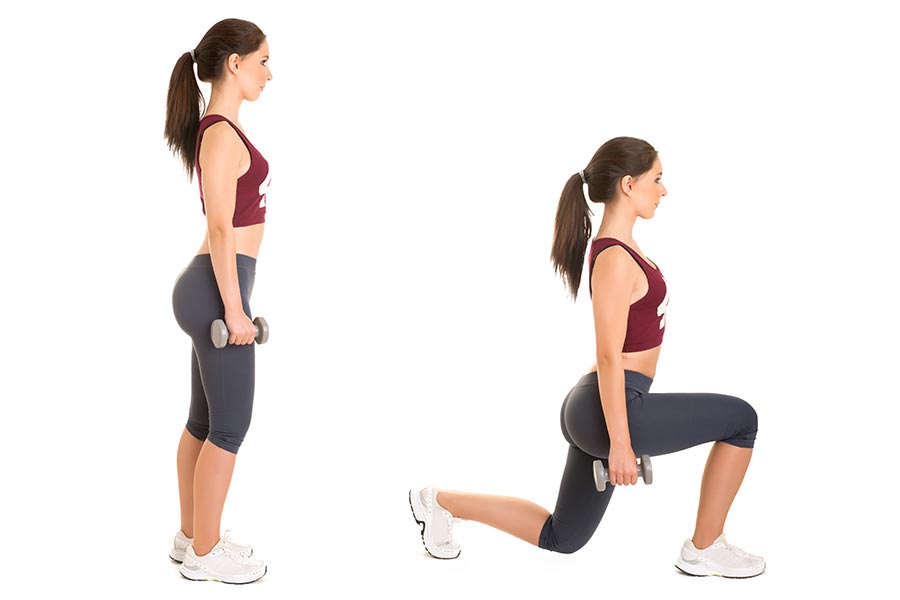
Pain is an alert that the body is not working optimally, and it should be addressed. People tend to want to work through pain while exercising or to get things done around the house; however, this can lead to injury. It is best to address the issues causing pain immediately and fix them so that we can avoid long term issues. When muscles are tight or weak, or joints are stiff or unstable, the body does not work at its best. It automatically compensates by using different muscles or poor alignment to get the job done. Muscle tightness and weakness are results of how they are being used day to day.
Continue Reading »
Written by Nicole on November 7, 2017 |
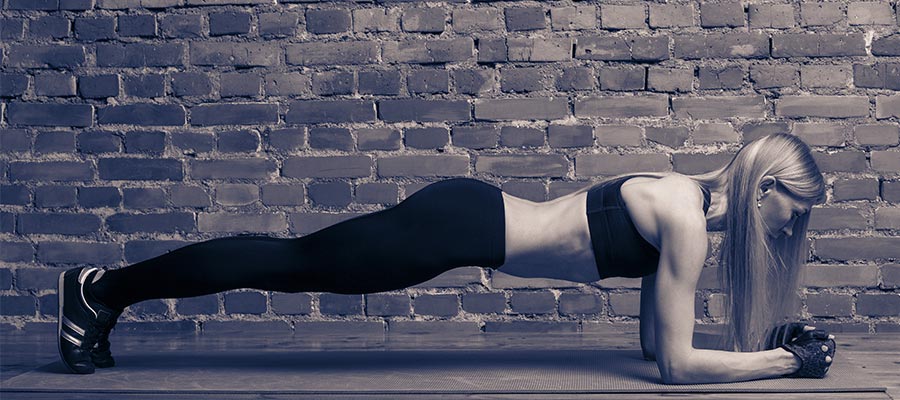
The importance of core strengthening is that it stabilizes the spine in anticipation of all movements, starting from when we roll out of bed in the morning to going out for an evening walk. When the spine is not supported, there can be undue stresses that cause wear and tear over time or, even worse, an acute injury. If the back has been injured, the muscles may not fire at all, or the timing of when they do can be delayed. This inadequate muscle support can lead to an increase in stress on the spine.
Continue Reading »
Written by Sean on October 29, 2017 |

Have you ever wondered who this “kid” helping you with exercises is? Well this “kid” is not a kid, rather a young adult who has either completed or is in the process of completing their education to receive their bachelor’s degree. The title that this “kid” holds is Exercise Specialist, meaning that he or she has the knowledge and training to show patients how to perform the exercises that they are given by the therapist safely and correctly. As a patient, if you are experiencing pain or discomfort while performing an exercise just tell an Exercise Specialist, who is always around, and they will help you modify the exercise to where you won’t feel the pain or discomfort while still targeting the muscle groups that the exercise intends. If we, exercise specialists, see that a patient is struggling with an exercise because of discomfort, even with modification of the exercise, we will make a note of that for the therapist and move the patient on to the next exercise. We do this because patients come into the clinic to get better, not to regress.
Continue Reading »
Written by Alberto on August 28, 2017 |
 What shoe is best for you? The short answer is it depends. It depends on a lot of factors, including foot type, joint mobility, strength and posture. There is not one shoe type or brand on the market that works for everyones foot. Lets talk about some general differences of shoes on the market.
What shoe is best for you? The short answer is it depends. It depends on a lot of factors, including foot type, joint mobility, strength and posture. There is not one shoe type or brand on the market that works for everyones foot. Lets talk about some general differences of shoes on the market.
Continue Reading »
Written by Rachel on July 5, 2017 |
 While rock climbing was previously thought of as an extreme sport, an increase in the number of climbing gyms in the past 30 years has made the sport more accessible and increasingly popular. As more non-skilled climbers have taken up the physically and emotionally challenging activity, they have put themselves at an increased risk of injury. Besides the risk posed by traumatic falls, physical therapists have also noticed an increase in overuse injuries. Due to the repetitive, high torque movements in rock climbing, we are seeing climbers push their abilities without proper form, technique or cross training.
While rock climbing was previously thought of as an extreme sport, an increase in the number of climbing gyms in the past 30 years has made the sport more accessible and increasingly popular. As more non-skilled climbers have taken up the physically and emotionally challenging activity, they have put themselves at an increased risk of injury. Besides the risk posed by traumatic falls, physical therapists have also noticed an increase in overuse injuries. Due to the repetitive, high torque movements in rock climbing, we are seeing climbers push their abilities without proper form, technique or cross training.
Continue Reading »
Written by Laura on May 16, 2017 |
 Do your feet hurt when you walk? Do you get cramps in your feet or lower legs? Feel tight and achy after a long day of work? There are many reasons why the feet can be painful, but there are also easy solutions that you can implement into your day to keep your feet happy and healthy.
Do your feet hurt when you walk? Do you get cramps in your feet or lower legs? Feel tight and achy after a long day of work? There are many reasons why the feet can be painful, but there are also easy solutions that you can implement into your day to keep your feet happy and healthy.
Continue Reading »
Written by Dana on May 25, 2016 |
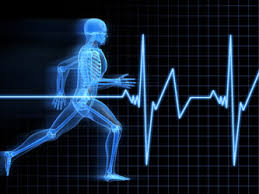 The term “sports medicine” often conjures up ideas of a professional athlete receiving therapy in order to play in the big game. Sports medicine can also include athletes at the college, high school, middle school, elementary school or recreational level The skill levels vary at each level of competition but the injuries are similar in severity and complexity. The goal at Proactive for Physical Therapy and Sports Medicine is to return the athlete to his or her chosen sport quickly and safely, at any level of competition.
The term “sports medicine” often conjures up ideas of a professional athlete receiving therapy in order to play in the big game. Sports medicine can also include athletes at the college, high school, middle school, elementary school or recreational level The skill levels vary at each level of competition but the injuries are similar in severity and complexity. The goal at Proactive for Physical Therapy and Sports Medicine is to return the athlete to his or her chosen sport quickly and safely, at any level of competition.
We work with young recreational athletes, club and travel teams, school teams, and retirees who want to remain active. All of these athletes share a strong competitive nature and a desire to return to their sport.
The sports medicine team may include an experienced physician, physical therapist, athletic trainer and exercise specialist. The sports medicine team assesses the injured athlete and initiates a treatment plan to assist healing and a return to their sport.
A few criteria for when to seek help from a sports medicine professional:
- The injury has not responded to rest and continues to be a problem.
- The injury prevents the athlete from participating at the level of skill previously performed.
- The injury is getting worse.
- The athlete is compensating for the injury by altering his/her technique. Compensation can take the form of a limp or altering the throwing motion.
Proactive for Physical Therapy and Sports Medicine will evaluate and assess the athlete and then initiate a comprehensive and individualized rehabilitation program. The greatest reward is watching the athlete we have worked with return to their sport.
Written by Jade on April 20, 2016 |
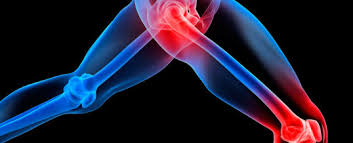 Over 23 million people participate in the sport of Golf. 6.2 million of those individuals are over the age of 65. Many people have total hip replacements and are unsure if they are able to golf again. YES, you can play golf again! There are many injuries that can occur from overuse playing golf. Injuring the lower extremity can make an effect on participation. 78.9% of people, report altered performance after an injury.
Over 23 million people participate in the sport of Golf. 6.2 million of those individuals are over the age of 65. Many people have total hip replacements and are unsure if they are able to golf again. YES, you can play golf again! There are many injuries that can occur from overuse playing golf. Injuring the lower extremity can make an effect on participation. 78.9% of people, report altered performance after an injury.
Continue Reading »
Written by Kim on March 30, 2016 |
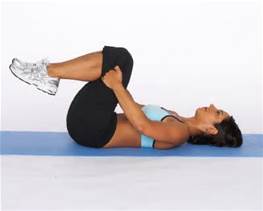 A health back is essential in our daily lives. Most of us will have back pain. Preventive care as in stretching can help tremendously! One of the best stretches to do on a daily basis is a hamstring stretch. The hamstrings attach into the pelvis which influences the back. Too tight of a hamstring pulls on the pelvis in a posterior way and creates pressure to our discs, ligaments, and muscles of the back. The best position to stretch the hamstrings is on your back with your knee to the chest. The other leg can be bent if you are really tight or in a straight position if you are more flexible. The knee is drawn to the chest and then straighten the leg up and pull the toes towards you. Hold the position for one minute X 3. Repeat on the other side X 3. Often I suggest a small towel roll in the small of the back for support as you stretch. Also remember to breathe deeply for extra relaxation
A health back is essential in our daily lives. Most of us will have back pain. Preventive care as in stretching can help tremendously! One of the best stretches to do on a daily basis is a hamstring stretch. The hamstrings attach into the pelvis which influences the back. Too tight of a hamstring pulls on the pelvis in a posterior way and creates pressure to our discs, ligaments, and muscles of the back. The best position to stretch the hamstrings is on your back with your knee to the chest. The other leg can be bent if you are really tight or in a straight position if you are more flexible. The knee is drawn to the chest and then straighten the leg up and pull the toes towards you. Hold the position for one minute X 3. Repeat on the other side X 3. Often I suggest a small towel roll in the small of the back for support as you stretch. Also remember to breathe deeply for extra relaxation
Continue Reading »
Written by Kim on March 23, 2016 |
Walk as if you are kissing the earth with your feet- Thich Nhat Hanh
 One of the things that a Physical Therapist evaluates when you have your initial visit is how you are walking. Gait changes are very common with injuries to the back, hip, knees or ankles. One of the most important things you can do is to start to walk as normally as possible after your injury or surgery. The sooner you get back to a normal gait pattern, the better you will be. Often after surgery you may have crutches, a walker, or limitations per you doctor about weight bearing status which assist you for support until you can fully weight bear. Continue Reading »
One of the things that a Physical Therapist evaluates when you have your initial visit is how you are walking. Gait changes are very common with injuries to the back, hip, knees or ankles. One of the most important things you can do is to start to walk as normally as possible after your injury or surgery. The sooner you get back to a normal gait pattern, the better you will be. Often after surgery you may have crutches, a walker, or limitations per you doctor about weight bearing status which assist you for support until you can fully weight bear. Continue Reading »





 What shoe is best for you? The short answer is it depends. It depends on a lot of factors, including foot type, joint mobility, strength and posture. There is not one shoe type or brand on the market that works for everyones foot. Lets talk about some general differences of shoes on the market.
What shoe is best for you? The short answer is it depends. It depends on a lot of factors, including foot type, joint mobility, strength and posture. There is not one shoe type or brand on the market that works for everyones foot. Lets talk about some general differences of shoes on the market. While rock climbing was previously thought of as an extreme sport, an increase in the number of climbing gyms in the past 30 years has made the sport more accessible and increasingly popular. As more non-skilled climbers have taken up the physically and emotionally challenging activity, they have put themselves at an increased risk of injury. Besides the risk posed by traumatic falls, physical therapists have also noticed an increase in overuse injuries. Due to the repetitive, high torque movements in rock climbing, we are seeing climbers push their abilities without proper form, technique or cross training.
While rock climbing was previously thought of as an extreme sport, an increase in the number of climbing gyms in the past 30 years has made the sport more accessible and increasingly popular. As more non-skilled climbers have taken up the physically and emotionally challenging activity, they have put themselves at an increased risk of injury. Besides the risk posed by traumatic falls, physical therapists have also noticed an increase in overuse injuries. Due to the repetitive, high torque movements in rock climbing, we are seeing climbers push their abilities without proper form, technique or cross training. Do your feet hurt when you walk? Do you get cramps in your feet or lower legs? Feel tight and achy after a long day of work? There are many reasons why the feet can be painful, but there are also easy solutions that you can implement into your day to keep your feet happy and healthy.
Do your feet hurt when you walk? Do you get cramps in your feet or lower legs? Feel tight and achy after a long day of work? There are many reasons why the feet can be painful, but there are also easy solutions that you can implement into your day to keep your feet happy and healthy. The term “sports medicine” often conjures up ideas of a professional athlete receiving therapy in order to play in the big game. Sports medicine can also include athletes at the college, high school, middle school, elementary school or recreational level The skill levels vary at each level of competition but the injuries are similar in severity and complexity. The goal at Proactive for Physical Therapy and Sports Medicine is to return the athlete to his or her chosen sport quickly and safely, at any level of competition.
The term “sports medicine” often conjures up ideas of a professional athlete receiving therapy in order to play in the big game. Sports medicine can also include athletes at the college, high school, middle school, elementary school or recreational level The skill levels vary at each level of competition but the injuries are similar in severity and complexity. The goal at Proactive for Physical Therapy and Sports Medicine is to return the athlete to his or her chosen sport quickly and safely, at any level of competition. Over 23 million people participate in the sport of Golf. 6.2 million of those individuals are over the age of 65. Many people have total hip replacements and are unsure if they are able to golf again. YES, you can play golf again! There are many injuries that can occur from overuse playing golf. Injuring the lower extremity can make an effect on participation. 78.9% of people, report altered performance after an injury.
Over 23 million people participate in the sport of Golf. 6.2 million of those individuals are over the age of 65. Many people have total hip replacements and are unsure if they are able to golf again. YES, you can play golf again! There are many injuries that can occur from overuse playing golf. Injuring the lower extremity can make an effect on participation. 78.9% of people, report altered performance after an injury. A health back is essential in our daily lives. Most of us will have back pain. Preventive care as in stretching can help tremendously! One of the best stretches to do on a daily basis is a hamstring stretch. The hamstrings attach into the pelvis which influences the back. Too tight of a hamstring pulls on the pelvis in a posterior way and creates pressure to our discs, ligaments, and muscles of the back. The best position to stretch the hamstrings is on your back with your knee to the chest. The other leg can be bent if you are really tight or in a straight position if you are more flexible. The knee is drawn to the chest and then straighten the leg up and pull the toes towards you. Hold the position for one minute X 3. Repeat on the other side X 3. Often I suggest a small towel roll in the small of the back for support as you stretch. Also remember to breathe deeply for extra relaxation
A health back is essential in our daily lives. Most of us will have back pain. Preventive care as in stretching can help tremendously! One of the best stretches to do on a daily basis is a hamstring stretch. The hamstrings attach into the pelvis which influences the back. Too tight of a hamstring pulls on the pelvis in a posterior way and creates pressure to our discs, ligaments, and muscles of the back. The best position to stretch the hamstrings is on your back with your knee to the chest. The other leg can be bent if you are really tight or in a straight position if you are more flexible. The knee is drawn to the chest and then straighten the leg up and pull the toes towards you. Hold the position for one minute X 3. Repeat on the other side X 3. Often I suggest a small towel roll in the small of the back for support as you stretch. Also remember to breathe deeply for extra relaxation One of the things that a Physical Therapist evaluates when you have your initial visit is how you are walking. Gait changes are very common with injuries to the back, hip, knees or ankles. One of the most important things you can do is to start to walk as normally as possible after your injury or surgery. The sooner you get back to a normal gait pattern, the better you will be. Often after surgery you may have crutches, a walker, or limitations per you doctor about weight bearing status which assist you for support until you can fully weight bear.
One of the things that a Physical Therapist evaluates when you have your initial visit is how you are walking. Gait changes are very common with injuries to the back, hip, knees or ankles. One of the most important things you can do is to start to walk as normally as possible after your injury or surgery. The sooner you get back to a normal gait pattern, the better you will be. Often after surgery you may have crutches, a walker, or limitations per you doctor about weight bearing status which assist you for support until you can fully weight bear.